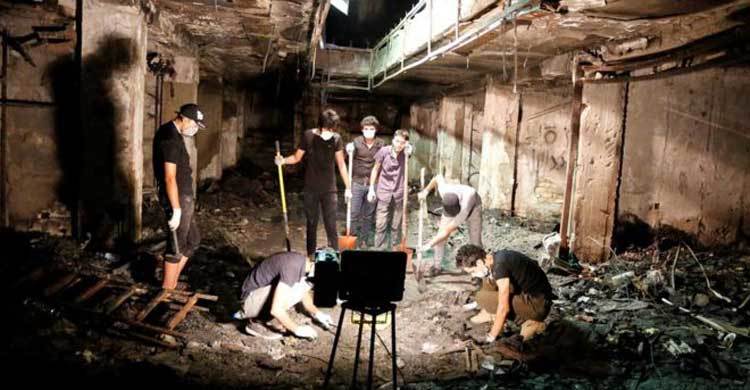Did IS use new type of bomb for deadliest attack?

On a Baghdad street once throbbing with life, there is a soft recitation of prayers, a silent lighting of candles, and quiet sobbing at the edges of charred ruins. Sweepers start to clear away debris, and drills buzz in the shells of gutted shops.
But the scene of the deadliest ever attack carried out by so-called Islamic State (IS) anywhere in the world is still a makeshift shrine. On 3 July, 292 Iraqis lost their lives here.
This week, the haunting strains of a cello wafted through the cavernous black hulks where two popular centres once drew in Iraqis for shopping and socialising.
‘If terrorists are trying to turn every element of life into a battlefield, I will turn it into a field of beauty and civilisation,’ declares Karim Wasifi, composer and conductor with Iraq`s National Symphony Orchestra.
He has played his cello at other major bomb sites in Baghdad as an affirmation of Iraqis’ determination to fight back.
Hardly a day goes by without an attack somewhere in a city laced with security checkpoints and armed guards.
But the explosion in Baghdad’s Karrada neighbourhood was no ordinary bomb. From its design to its destination, this attack underlines that IS has found a new way to inflict harm and cause terror.
‘Daesh used, for the first time, a new tactic which helped it to move undetected through checkpoints,’ a Western security source in Baghdad tells me, using the name for IS more commonly used in the region.
‘We’ve never seen it before, and it’s very worrying.’
‘Unique’ chemical mix
Precise details of the attack, which is under Iraqi investigation, are still being pieced together. The tactic known as a VBIED - vehicle-borne improvised explosive device - is now widely used in suicide bombings.
But this one is said to differ in the way the explosives were placed in the van, and how the chemicals were put together.
‘It’s really difficult to make,’ an explosives expert who has knowledge of the investigation explained, saying the device may have been developed in the Iraqi city of Falluja when it was under IS control.
‘Daesh has given a lot of thought to how to move through checkpoints.’
The bomb-makers are believed to have taken a formula ‘available on the internet’, and then adjusted the quantities to reduce its risk of detection, and increase its impact. Several Iraqi experts also described the mix of chemicals as ‘unique’.
‘We are used to big fires but the chemicals in this bomb were used for the first time in Iraq,’ says Brigadier General Kadhim Bashir Saleh of the Civil Defense Force. ‘It was unique, strange, and terrible.’
Another Iraqi security expert, Hisham al-Hashimi, told me he believes a similar mix of explosives may have been used, only once, in an attack by al-Qaeda in 2004.


